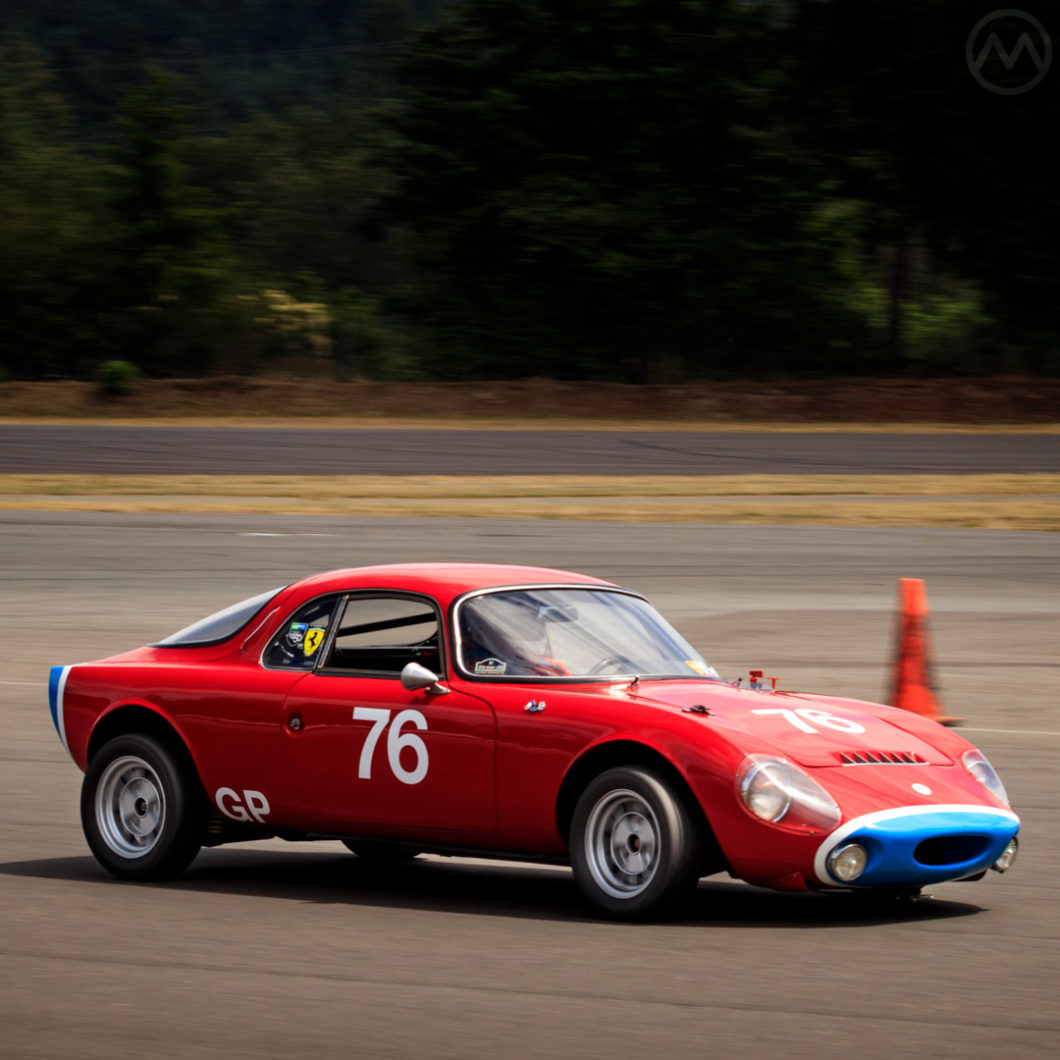The “D” in Djet was there purely for pronunciation purposes. The car’s creator, the already famous René Bonnet, wasn’t sure if his fellow French would properly pronounce the English-language word “Jet!” the way he wanted. In 1962 that word connoted speed and modernity – and what better an image to conjure for the world’s first production mid-engined car?
In 1958, Stirling Moss had won the Argentine GP in a mid-engined Cooper and five years later F1 was dominated by mid-engined cars – the Ferrari 156 taking the constructor’s title in 1961 and BRM P56 in 1962. Closed-wheel racers like the Porsche 718 and Maserati Tipo 63 also adapted the layout – so it was only a matter of time before somebody made a (rear) mid-engined car you could buy for the road.
That somebody was René Bonnet, and he narrowly beat out Alejandro DeTomaso for this particular historical milestone. DeTomaso’s Ford Kent-powered Vallelunga came out months later.
The line between Bonnet’s race cars and his road cars was a blurry one, so the experience was lively – but the Djet was meant from the start to be a production car for road use.
It was not for ordinary people, however. It cost nearly as much as an E-type when new and even then Bonnet lost money on every car. In the end his body supplier – a then-obscure defense contractor – stepped in and took things over. The car became the Matra Djet after that, and gave birth to a long line of famous Matras for the road and the track.
The story begins with Bonnet himself, born on December 27, 1904 in the small town of Vaumas, in central France.
René Bonnet
Vaumas was a poor town in a poor area, and things only got worse with the deprivations brought on by WW1. After leaving school at 12 to work as a farmhand and apprentice with his carpenter father, he soon left for factory work in Moulins, about 15 miles away and for a time played professional football as well.
At 21 he joined the Navy but was seriously injured when a drill instructor ordered him to dive head first into shallow water. His back injuries were then misdiagnosed as bone tuberculosis – his doctors told him he’d eventually be paralyzed.
He went to a Sanitarium and had to live in a plaster cast for two years. Kind to his fellow patients, he set up weaving looms for them so they could have something productive to do. After two years of no change in his condition, he got impatient, cut himself out of the cast, and got a second opinion which fortunately dispelled any notion of him having TB.
He was free – and immediately went home to Vaumas to work as a weaver. And then came the phone call.
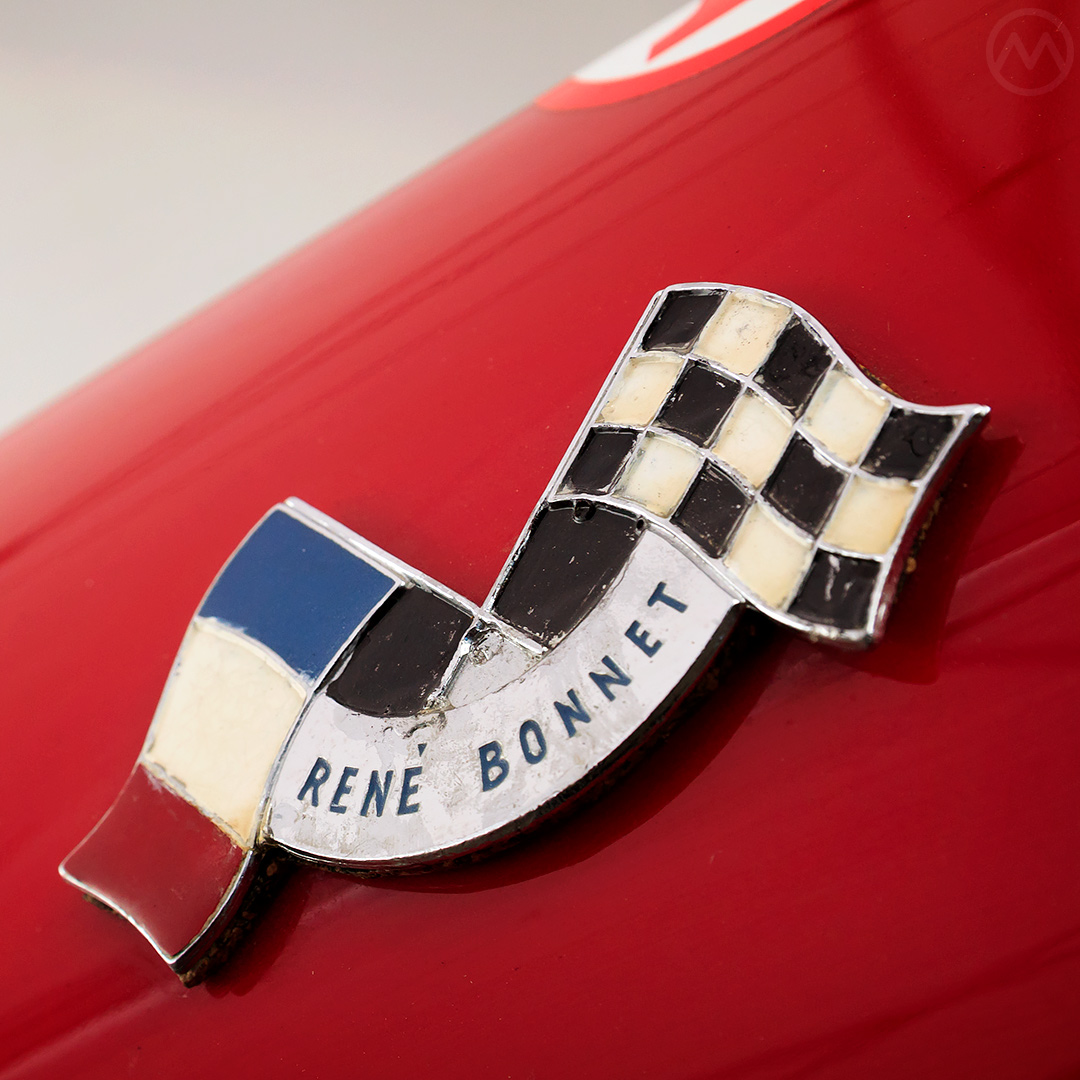
One day in early 1929, his sister called him from Champigny-Sur-Marne in Paris. Her husband had died and she needed his help to run the garage he owned. She had nowhere else to turn and knew that he had at least some mechanical experience – plus, she remembered that he’d been passionate about cars for his whole life, even if he’d never had the cash to own one.
Bonnet was soon off to Paris, where he helped turn around the garage’s flagging fortunes by maintaining cars and selling Rosengart cars, eventually adding Citroëns to their agency.
Meanwhile, not far away in Champigny-Sur-Marne, eighteen year old Charles Deutsch was suddenly left to manage his father’s coachworks when he suddenly died. With young Charles (born 1911) also studying at the École Polytechnique, it proved impossible to deal with the business.
In 1932, with another brother-in-law on the scene, Bonnet bought out Mrs. Deutsch (Charles’ widowed mother) and the business became his. Charles, for his part, got to keep an apartment upstairs. The two would work together for the next 29 years.
Deutsch-Bonnet
Bonnet took his Citroën connections with him and in his spare time he took up racing that very year – mostly in sub-750-cc cars.
Deutsch, meanwhile, continued his studies, eventually becoming an aerodynamicist and civil engineer. He began working for the Corps des ponts et chaussées, the French Government agency in charge of highway and bridge infrastructure, in 1935, but still lived atop the garage.
A year later, when Bonnet was offered, then denied, a ride from Amilcar in the French Grand Prix, the two decided to build their own race car. This was a pure hobby exercise, but their hot-rodded Citroën built from a wrecked Traction Avant, called the D.B. 1, proved to be quite a quick car.
The DB1’s appearance at local events in Paris quickly led to more interest and a series of “tuner” Citroëns, but Bonnet’s premises were small – only about 8,600 square feet, so only a limited number of cars could be built. Deutsch was not directly involved in selling these cars as the Government did not allow employees to “moonlight” at other businesses. That wasn’t important when it was only a few specials, but the “DB” name would soon be much more high profile.
In the late 1940s the pair continued to build faster and more exotic Citroën-based specials and offered aftermarket tuning parts for Citroëns, and Bonnet wanted to make a full production car. Citroën, however, was not interested in supplying components.
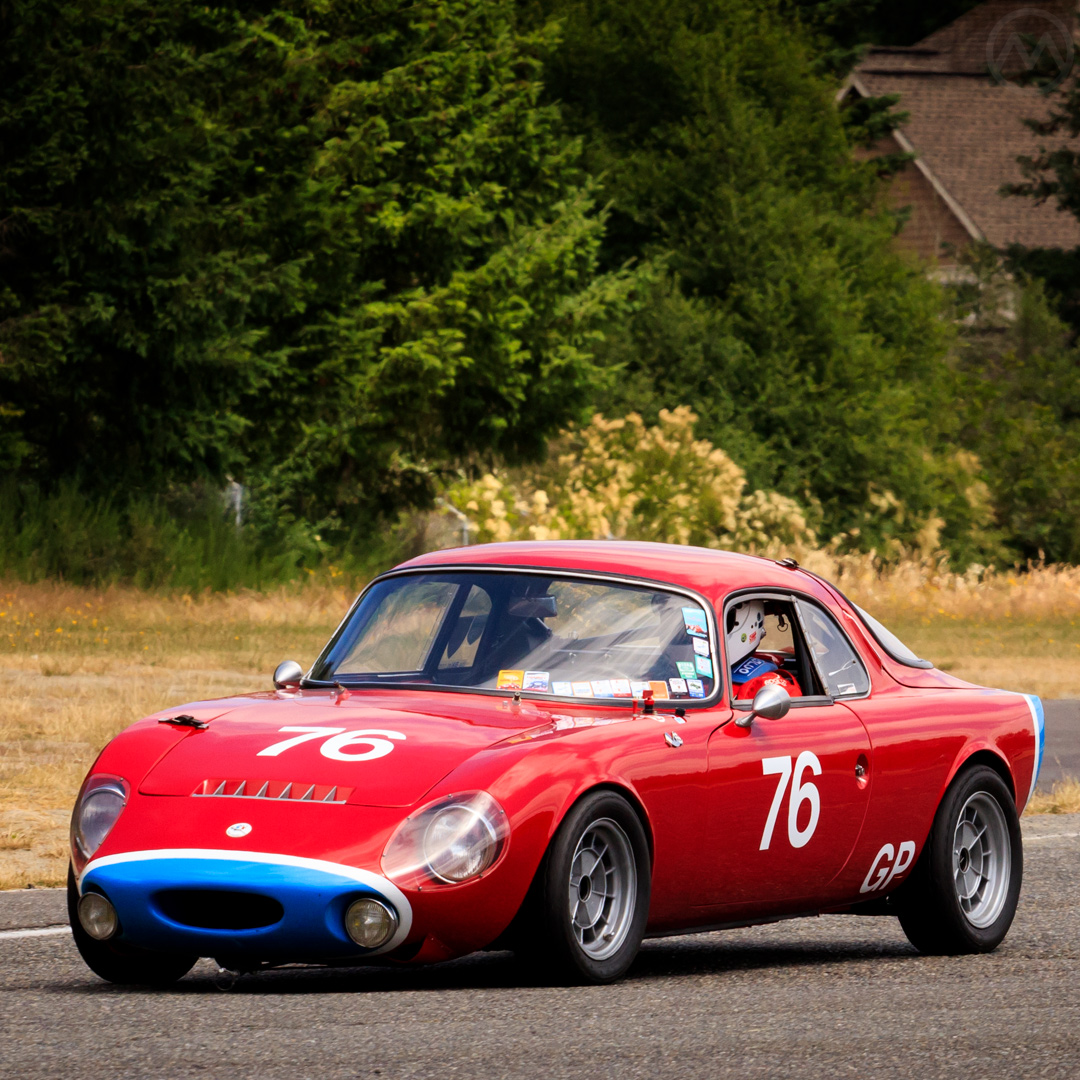
Instead, he cut a deal with Panhard in 1949 – who needed all the help they could get and had a brand new, potent flat twin and other lightweight components ideal for a small sports car. Using much of the drivetrain of the postwar Panhard Dyna, the initial Panhard-based DB cars were built in part by Antem, a Belgian coachbuilder, then finished in France.
Though small – no more than 851cc in its most potent form – the “Antem” DB and the other early Panhard DB racers were soon very successful on the track. More cars followed, now with aerodynamic bodies designed by Deutsch. At first, Bonnet contracted out the bodies to another builder – Chausson, but later brought everything in house.
The bodies, which were eventually moved to lighter fiberglass, allowed for dramatically higher top speeds than you’d think a 2-cylinder car would be capable of. They were sleek fastbacks often with bullet-like front ends, and competition success soon followed.
Though cars for the road, the later DB HBR/Coach and LeMans models were track day warriors and racked up a spectacular competition record – dominating the 750-cc class at LeMans, Sebring, and the Mille Miglia from 1953-56 and racking up win after win. The HBR was still winning major events as late as 1960.
As a result, the expensive but quick sports cars found a willing audience on both sides of the Atlantic. DBs were never built in big numbers, but among club racers and sports car fans they were a big deal. The bodies kept evolving to yield higher speeds, and by 1959-60 the dedicated works racers were quite different looking from the regular cars.
At the same time, the company launched a more road-oriented car, the DB Le Mans. Though named for the company’s racing exploits, this car was bigger and more comfortable and specifically aimed at the booming American market for sports cars. Meant to rival the MGA and Porsche 356, it was introduced in Boston, not France. Later, there was another variation, the DB Missile, which was a little more basic.
Deutsch was only tangentially involved with the Le Mans – it’s design and concept were mostly Bonnet’s, and its styling was by Bonnet, his son Claude, and designer Jacques Hubert.
It was too difficult for a tiny outfit like DB to build a car of this type at the price MG or Porsche could, so sales were slow. In an effort to boost them, a more luxurious version, the Grand Luxe, was offered – but it was also too expensive to find much of a market and luxury buyers balked at the 2-cylinder Panhard mechanicals.
The Split
In 1961, the long partnership came to an abrupt end. It’s not entirely clear why – but there were several factors.
For years, Deutsch had been uncomfortable being in the public spotlight as part of the “DB” association. By then, he was the chief engineer of the Corps des ponts, and the DB cars were famous enough that his extracurricular activities were impossible to hide. He was only a minority shareholder and had not participated in Bonnet’s newer cars, but rules were rules.
Bonnet, meanwhile, saw that the Panhard twin had been worked as far as it would go. Or at least as far as he thought it would go. In 1960, he’d approached Renault to re-power the Le Mans and Missile with larger Renault fours. Bonnet, having had a taste of success, wanted to do more. Deutsch couldn’t go any further.
Panhard itself was in increasingly bad financial shape, and Deutsch wanted to stick with them. Whatever happened between the two, “DB” came to an end in the summer of 1961 and neither one would say why, exactly.
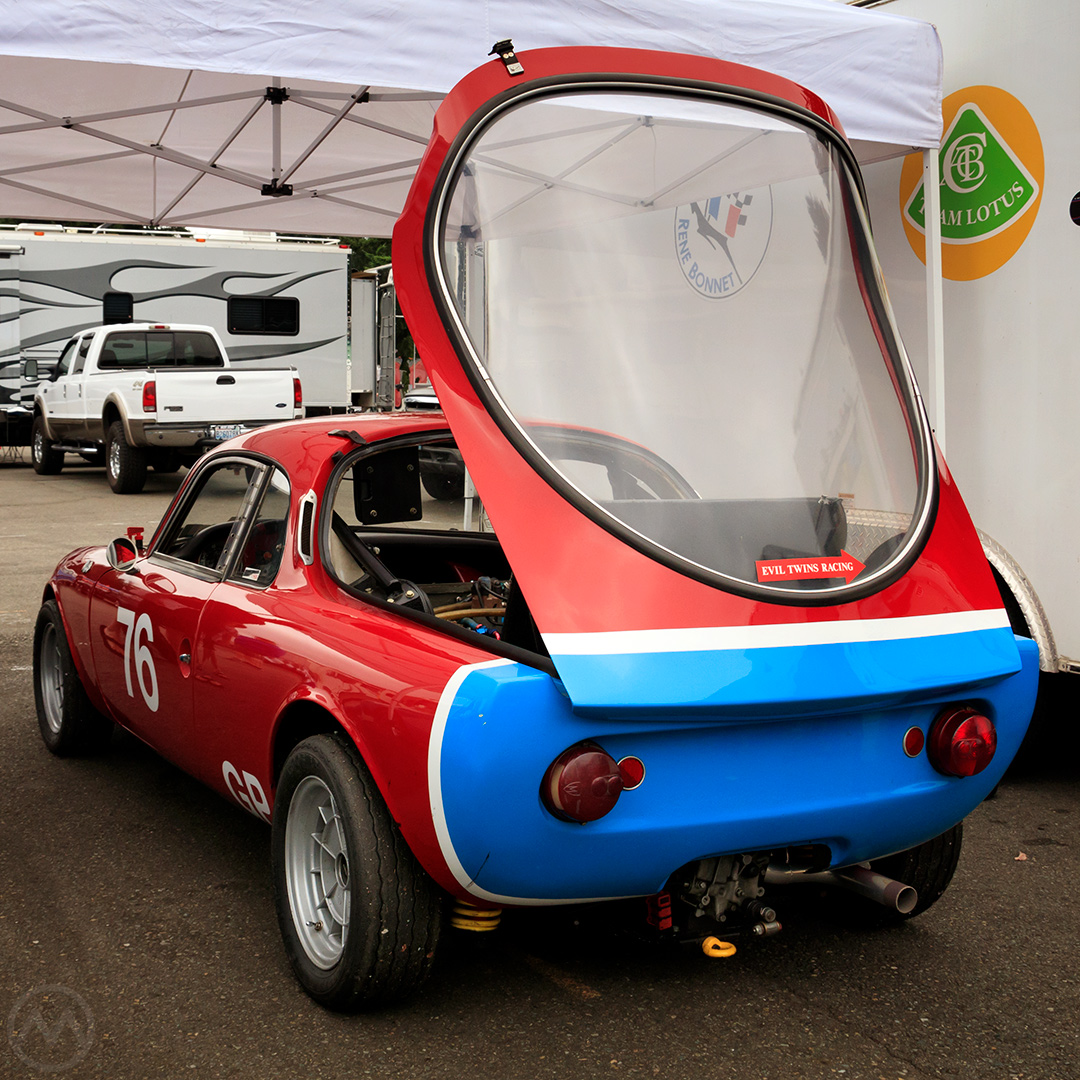
Bonnet immediately relaunched the Le Mans and Missile under the “Automobiles René Bonnet” label. Deutsch went to his government bosses and got special dispensation to work as a consultant for Panhard, creating for them (with his assistant Lucien Romani) the ultra-aerodynamic CD and various racers based on it until 1964.
Now that it was just “Automobiles René Bonnet,” the founder wanted to go further and create a modern roadgoing racer to follow up the successful DB line.
Djet
Bonnet and Jacques Hubert conceived of a very new car influenced by the open-wheel mid-engined machines and the Porsche 718, which had open and closed-wheel configurations. Still widely called “Rear engined” back then, the actual configuration put the engine behind the driver but ahead of the rear wheels, not “rear engined” in the sense of the Porsche 356.
To keep costs low as with the DB cars, the mechanical pieces would be sourced from Renault. Essentially, Bonnet took the Renault R8’s 1,108-cc four and mounted it backwards behind the driver. It was mated to the four-speed gearbox and drive setup from the Estafette commercial van, but with very different internals similar to the Gordini gearboxes from the Dauphine Gordini.
A light backbone chassis held all the components, which included disc brakes (sourced from Renault) all around and a fully independent suspension.
The body, utilized a partial Renault R4 floorpan, was to be made of reinforced fiberglass. It was manufactured in a new process by an outside supplier – defense contractor Matra. Bonnet’s friend André Moynet whom he met through racing, was an aircraft engineer and test pilot for Matra, which was then heavily involved with France’s Sud Aviation. It was Moynet’s connections to Matra which secured the body supply, which was partially structural and bonded to the chassis – but the bodies cost a great deal to make.
The styling was by Hubert and while narrow-looking (the car was longer than it might have been to accommodate the mid-mounted engine), it was pleasing and contemporary – not dissimilar from what Alpine was doing. A huge rear mounted hatch opened to reveal the engine and a tiny rear compartment.

The public got to see the Djet – Jet was a fitting name for a fast car whose body was built by an aviation contractor – in June, 1962.
Competition versions, with longer tails and refined aerodynamics, appeared around the same time as the production car. The car won its class at the Nürburgring 1000km and narrowly came in second in its class at Le Mans – it was a legitimately fast car for something in the 1100-cc class.
Cars didn’t start reaching customers for some months, but the Djet could legitimately claim to be the first mid-engined production car. It did not have the creature comforts of the Le Mans, but it had performance and looks in spades.
The only problem? Cost again. Even with Renault’s parts, the very basic, small Djet cost 20,000FF – as much as a Facel-Vega Facellia and not much less than the dramatic, 150-mph Jaguar XKE.
Bonnet had hoped to supplement income from the Djet with aid from the government in putting together a state-sponsored F2 effort on behalf of Renault. He designed a car with Hubert, but was never paid – the project was ill timed given the big investment made in the Djet.
The promising Djet got worldwide attention, but in the first two years, less than 200 were made. A 996-cc DOHC version and a Gordini-powered version were eventually added, but they were a tiny portion of production. On cars that did reach customers, the design didn’t always work as promised – development had been rushed and the rear suspension would bottom out with a hard crash, brakes faded, and some of Renault’s pieces weren’t as robust as Bonnet had hoped.
In big debt to Matra for the tooling and the reworking of its factory space in Romorantin (owned by a subsidiary – Générale d’Applications Plastiques), things turned sour for Bonnet in 1964.
Matra Takes Over
Despite the Djet’s huge press and competition record, buyers did not come – probably because of the cost of the car relative to its size and prestige, but also because of early teething troubles. By the summer of 1964 it was clear Bonnet did not have enough money to keep things going and if the company collapsed, Matra would lose whatever investment it had made.
Bonnet’s health began to suffer from the stress, and he eventually required heart surgery – which made a convenient cover for his stepping down and Matra taking over the company, which is exactly what happened in October of 1964.
Matra was not a car constructor and aside from Moynet really had no connection with automobiles – but now it suddenly managed the entire operation. Production was stopped in December so that the car could be refined to make it a slightly more reliable machine and so that mechanical upgrades could be done.
Many of the upgrades and changes were engineered in 1964 by Bonnet’s son Claude, though he would not always get the credit for them.
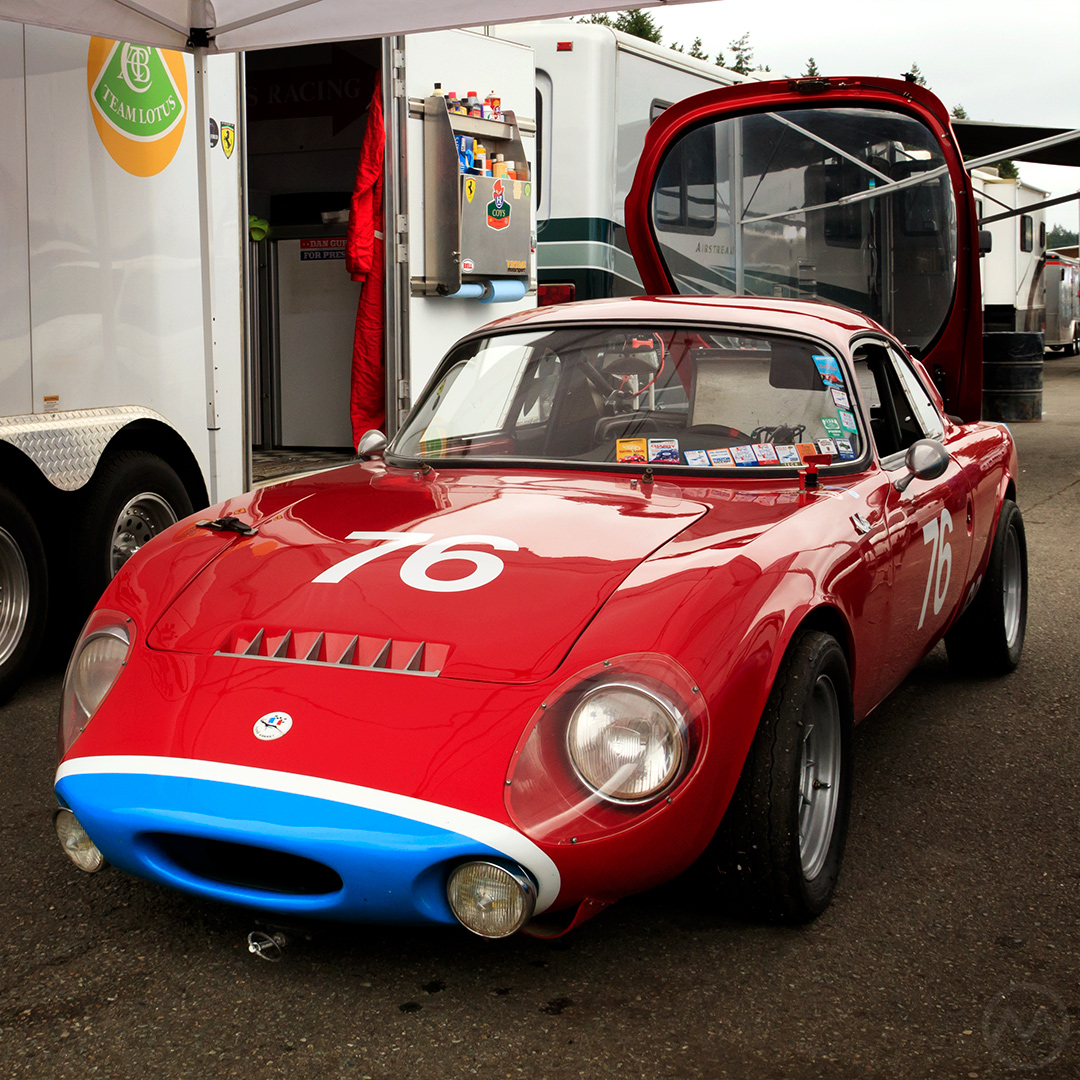
Matra CEO Jean-Luc Lagardère, another aviation engineer, hired Simca engineer Philippe Guédon to rework the car and improve it. Guédon had responded to a newspaper ad and Lagardére hired him just three minutes into his job interview. Both men were keen on building race cars that would build public prestige, just like Bonnet had, but Matra had much deeper pockets.
Guédon continued Claude Bonnet’s changes and made significant revisions of his own to the suspension, brakes, chassis, and body. When production resumed in April of 1965, the Djet was longer, faster, and smoother to drive. The name was also changed to Jet 5 from “Djet I/II/III/IV.” Eventually there was also a 1,255-cc Gordini-powered Jet 6, the ultimate iteration of the Djet.
Matra continued to build the Djet into 1966 but Lagardère and Guédon were focused on building their own car, which became the Matra M.530, named for one of the company’s ballistic missiles (a fitting successor to the Bonnet Missile of a few years earlier) and on racing. The M.530 was just as advanced a machine as the Djet had been, but more modern and faster – it led, later on, to the Bagheera and Murena sports cars and many other projects.
Matra also conquered racing. In time, Matra would even used Charles Deutsch’s expertise to help develop aerodynamic racers – after he’d retired from his government job.
While the Matra name suddenly became famous, the Bonnet name disappeared – Bonnet himself ended up living in his secretary’s apartment for a time in 1964-65 after recovering from surgery.
In 1968, Bonnet bought a house and barn in rural Connantre, more than a hundred miles from Paris and 60 miles or so south of Riems. Here he lived in quiet retirement, making friends and doing carpentry projects for the village until his death in 1983.
The car seen here today is an early Automobiles René Bonnet Djet owned by racer Dan Wardman.

